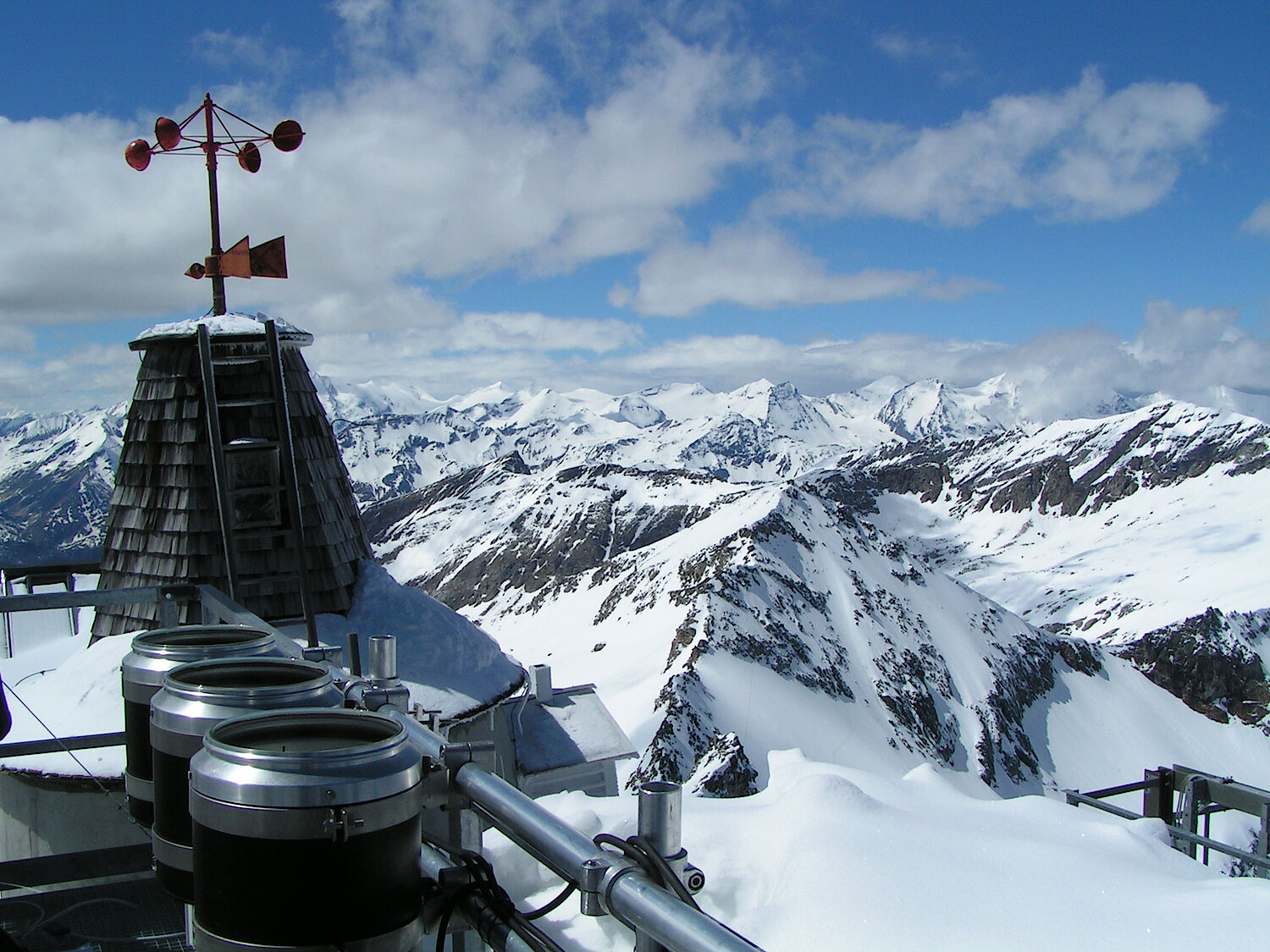Maximum levels of methane and carbon dioxide
The concentrations of carbon dioxide and methane measured at the observatory at Sonnblick in Austria reached the highest value since measurements began in April 2023. Carbon dioxide and methane are the strongest drivers of man-made climate change.

At the Sonnblick Observatory (3100 m above sea level), the monthly average concentration of carbon dioxide in April 2023 was 425.3 ppm (parts per million) and of methane 2.014 ppm.
These are the highest values since the beginning of the measurement and confirm the continuously rising trend of these two most important greenhouse gases in Austria and worldwide.
The values from the observatory at Sonnblick are in line with the worldwide trend
The Environment Agency Austria has been measuring carbon dioxide at the Sonnblick Observatory of GeoSphere Austria since 2001 and methane since 2012. The measured data are very similar to other locations on Earth - large wind systems rapidly disperse greenhouse gases around the world, regardless of where they were released.
"Carbon dioxide and methane remain in the atmosphere for years, so the measurements in the isolated location at the Sonnblick summit also show the global development well. There are short-term seasonal fluctuations, but the long-term trend is clearly upward," explains Iris Buxbaum from the Environment Agency Austria.
The main sources of carbon dioxide are industry, power generation, transport and buildings using fossil fuels. Carbon dioxide (CO2) accounted for the largest share (about 85%) of total greenhouse gas emissions in Austria in 2021.
Methane is primarily produced in microbiological fermentation processes at landfills or in the stomachs of ruminants (cattle farming). Methane (CH4) is the second most important greenhouse gas in Austria, with a share of more than 8% in 2021.
Carbon dioxide and methane remain in the atmosphere for years, so the measurements in the isolated location at the Sonnblick summit also show the global development well. There are short-term seasonal fluctuations, but the long-term trend is clearly upward.
Mainly responsible for global warming
Studies clearly show that global emissions of fossil carbon dioxide and methane caused by humans account for the majority of global warming, including its consequences," says Marc Olefs, head of GeoSpehre Austria's Climate Impact Research department, "the contribution of carbon dioxide is about half, that of methane about one-third."
Greenhouse gases absorb part of the heat radiation from the earth's surface and thus reduce the radiation of this heat into space; the earth heats up.
Natural and manmade greenhouse effect
Warming from naturally occurring greenhouse gases makes life on Earth possible. The additional amounts of fossil greenhouse gases (59 gigatons of carbon dioxide equivalent in 2019) added to the atmosphere by humans result in a current heating capacity of 2.5 watts per square meter, which, when summed over the globe, is 73 times the world's energy demand. This surplus energy (measured by satellites) has caused a significant increase in temperature and numerous changes in the weather and climate system since the early 1900s, with dramatic consequences for humans and nature.
Warming in Europe 2.2 degrees, in Austria 2.7 degrees
Recently published data from Copernicus, the European Commission's Earth observation program, show a 2.2 degree increase in temperature in Europe over the pre-industrial era (average of the last five years compared to the average 1850-1900). The global increase was 1.15 degrees. In Austria, the temperature has risen by 2.7 degrees over the same period.
The main reason for the stronger temperature increase in Europe and Austria compared to the global average is the fact that land masses are warming faster than the thermally more inert oceans. The warming is accelerated, especially in Central and Eastern Europe since the 1980s, by an increase of solar radiation back to 1950s levels due to air pollution control measures (decreasing aerosol concentrations). This now allows the heating effect of greenhouse gases such as carbon dioxide and methane to develop fully.
Other factors in the stronger warming in Austria compared to Europe are the weak maritime influence in Austria and changes in the large-scale atmospheric circulation; these are still the subject of current research.
Fast action is important
Since carbon dioxide remains in the atmosphere for up to 100,000 years, the consequences of past and future emissions are irreversible unless mankind succeeds in removing these gigantic amounts of carbon dioxide from the atmosphere again. Therefore, a drastic and very quick reduction of further emissions is important. Global net zero emissions of carbon dioxide are necessary to at least stabilize further warming and severity of consequences.
"Climate models clearly show us how different the future may be in Austria, depending on the extent of global climate action," says climate researcher Marc Olefs. "If global greenhouse gas emissions continue to run unchecked, for example, winter snow in permanent settlement areas will disappear and currently extreme heat years will become the new normal. By contrast, if the Paris climate targets are met, the decline in snowpack would be halved and heat days would level off just above current levels."
Contact GeoSphere Austria
Thomas Wostal (Press)
T: 0664 75057109
M: geosphere@wostal.at
Further Informationen
CO2 and CH4 Measurement Sonnblick Oberservatory
Climate data Austria
Global Annual Report WMO
European State of the Climate 2022 (Copernicus)
Dashboard Klimadaten (German)

